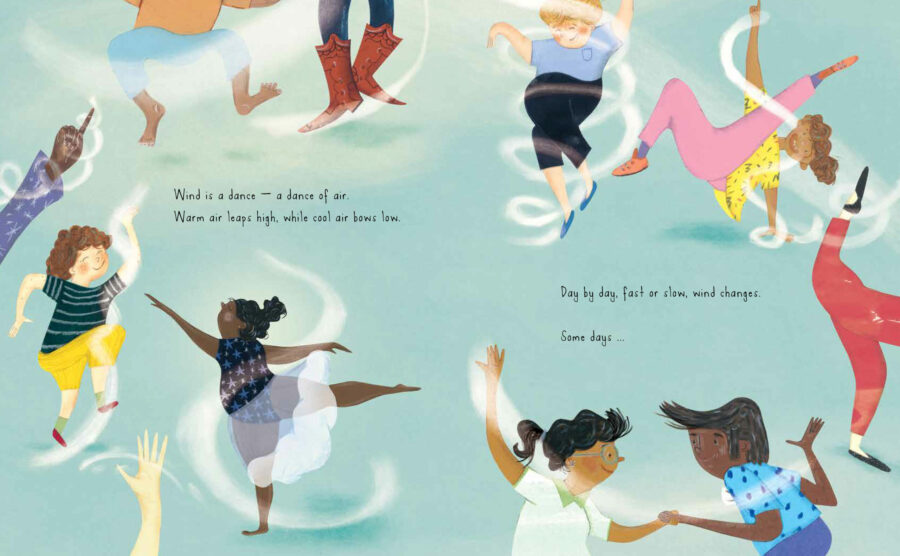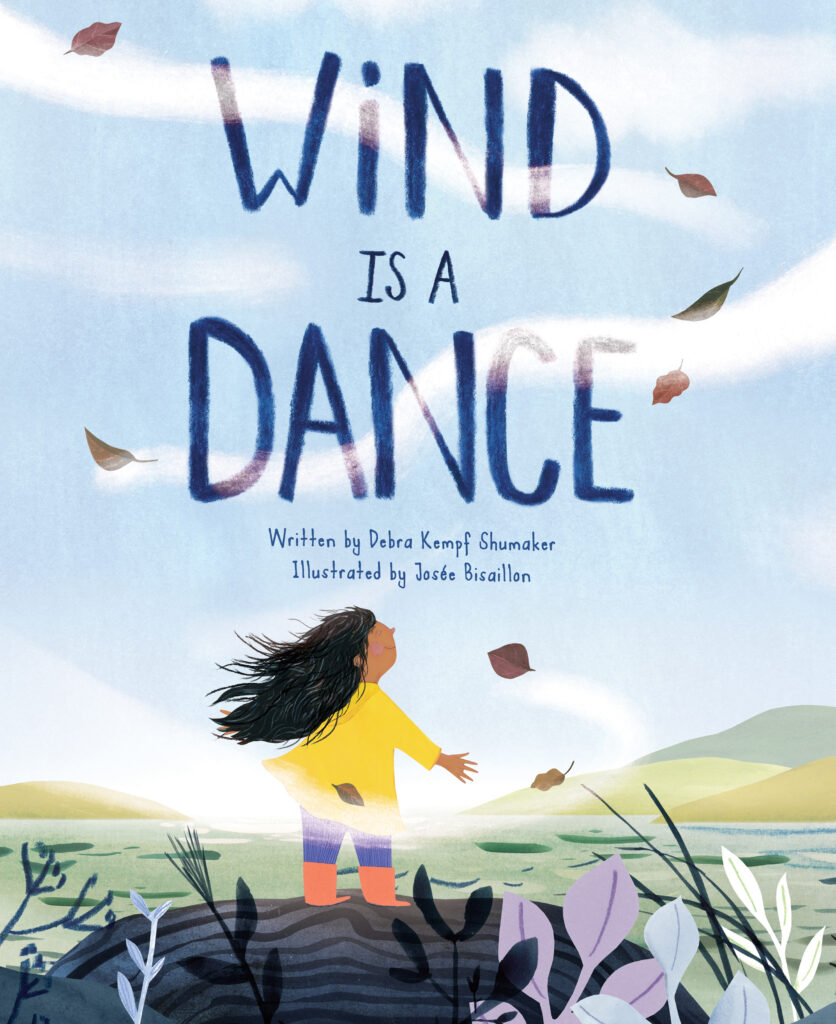GUEST BLOGGER DEBRA KEMPF SHUMAKER
WIND IS A DANCE is a lyrical picture book that ties together Language Arts and STEM lessons to teach students about the wind. Beginning with the explanation that wind is a “dance of air”, the author continues to use more metaphors to describe various types of wind. She also uses poetic devices like alliteration, assonance, and consonance. The book can also link to math and social studies lessons.
Before reading Wind Is a Dance
- Ask the students to name winds they already know and write them down.
- Have the students order the winds from slowest to fastest.
- Ask the students how they would describe the different types of wind. Some may find it hard to describe something they cannot see. Challenge them to think of some objects they could compare the different types of wind to.
- Explain that a metaphor is a literary device that can help explain complex ideas or create vivid imagery. Let the students know that WIND IS A DANCE is a book that uses metaphors to describe various types of wind.
- For older students, encourage them to pay attention during the reading to find other poetic devices the author used when writing WIND IS A DANCE.
Read Wind Is a Dance
- Point out the various metaphors.
- Point out the sidebars that provides more information about the various winds and the back matter that goes deeper into the science of wind.
After reading Wind Is a Dance
- Have the students compare their list of winds to the winds represented in the book. Did they come up with winds the author didn’t? If so, can they think of some metaphors they could use to describe those winds?
- Did students notice the various winds were listed from weakest to strongest? Are there other ways the author could have organized the information? (Possible answers: by season they typically occur, by geographic area where they typically occur.)
- Ask the students what other poetic devices the author used. (Alliteration, assonance, and consonance.)
- Challenge the students to come up with different metaphors for the winds the author used.
- Have the students brainstorm other types of weather and metaphors they could use to describe them. Can they use phrases with some alliteration, assonance, and consonance to expand on the metaphor?
Other cross curriculum ideas
Math
- The author lives in the United States but the publisher is based in Canada, as is the illustrator. The U.S. uses the English system for measurement while Canada uses the metric system. In the back matter, the author uses both English and metric measurements to describe wind speeds and distances. By using the numbers listed, have students figure out the conversion factor from miles to kilometers.
- Point out the Beaufort Scale listed in the back matter. Some of the winds in the book are named in the Beaufort Scale, others are not. Have the students use the wind speeds listed in the various wind descriptions in the back matter to determine where the other winds would fall on the Beaufort Wind Scale. If they came up with other winds not used in the book, have the students find the windspeed of each and place them on the Beaufort Scale.
Social Studies
- Have students locate on a map or globe where the three fastest wind speeds measured on land—noted in the back matter—are found.
- Using the back matter, have students identify on the map where the regional specific winds like blizzards, derechos, tornados, and hurricanes are typically found. If they came up with other winds that are regional specific, have them do the same with those winds.
- There are many winds common in other parts of the world. Have the class brainstorm and research windstorms not common in North America, list some facts of each, and locate the region they occur on a map or globe.
Featured image credit: From Wind is a Dance by Debra Kempf Shumaker, illustrated by Josée Bisaillon (Kids Can Press, 2024).
Debra Kempf Shumaker loves weird and fascinating facts. When she isn’t reading or writing, she enjoys hiking, gardening, and watching Jeopardy. She lives in Northern Virginia with her husband, three sons, and two cats. She is the author of FREAKY, FUNKY FISH (2021), TELL SOMEONE (2021), PECULIAR PRIMATES (2022), and WIND IS A DANCE (2024). Visit her online at www.debrashumaker.com, on Twitter (X) at @ShumakerDebra, Instagram at @debrakshumaker, and Bluesky at @debrakshumaker.












Leave a Reply
Your email is safe with me.